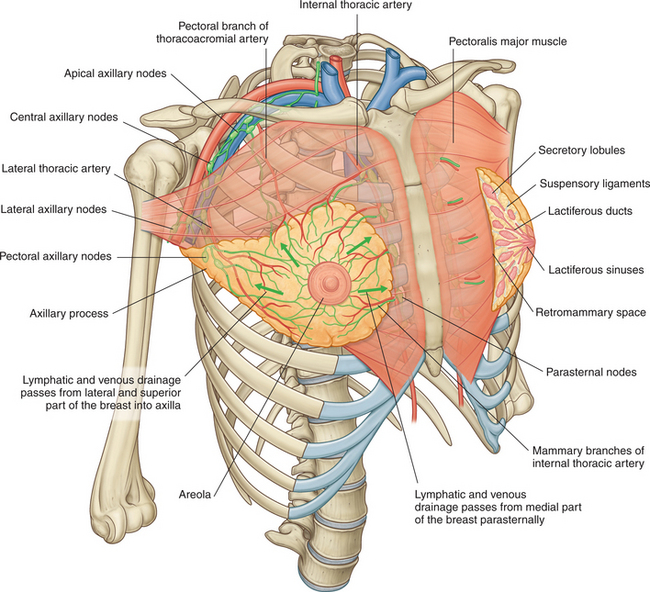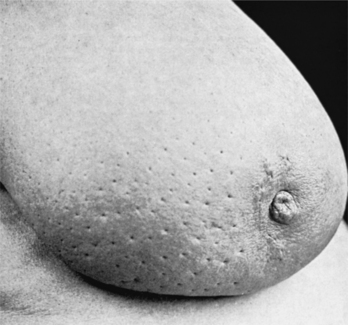CASE 7
A 62-year-old woman, concerned about a mass she detected during a breast self-examination, presented to the physician’s office. The physician also detected the mass in the left breast and ordered a mammogram and ultrasound. The results of these studies revealed a solid mass (Fig. 2-8A). A core biopsy of the mass was obtained and sent to the pathologist. The pathologist’s report provided a diagnosis of invasive carcinoma of no special type and confirmed the presence of estrogen and progesterone receptors on the tumor cells.
WHAT IS THE ARTERIAL SUPPLY TO THE FEMALE BREAST?
The breast is well equipped with an arterial blood supply (Fig. 2-9). The arteries that supply the breast are the:
WHAT IS THE VENOUS DRAINAGE OF THE FEMALE BREAST?
Venous drainage is principally to the axillary vein. Additional drainage is to the:
WHAT IS THE LYMPHATIC DRAINAGE OF THE FEMALE BREAST?
An appreciation for lymph flow is important clinically because it is the primary route of metastasis of breast cancer and for performing and interpreting a sentinel node biopsy. Lymphatic drainage of the female breast is as follows (Fig. 2-9):
A COMPLICATION OF DISSECTION OF THE AXILLARY LYMPH NODES IS LYMPHEDEMA OF THE UPPER EXTREMITY. WHAT IS THE ANATOMICAL EXPLANATION FOR THIS COMPLICATION?
WHERE DO MOST BREAST CANCERS DEVELOP?
The location and frequencies of cancerous lesions of the breast are:
WHY DO LARGER INVASIVE CARCINOMAS OF THE BREAST PRODUCE A DISTINCTIVE PEAU D’ORANGE APPEARANCE?
Peau d’orange, which is French for orange skin, is caused when the expanding tumor compresses the lymphatic vessels draining the breast. Lymphedema results from the lymphatic obstruction producing elevations of the skin of the breast. The dimpling effect occurs where the suspensory ligaments (of Cooper) anchor the skin to the breast. The elevations and dimples mimic the appearance of an orange peel (Fig. 2-10).






